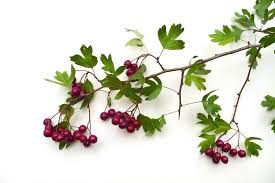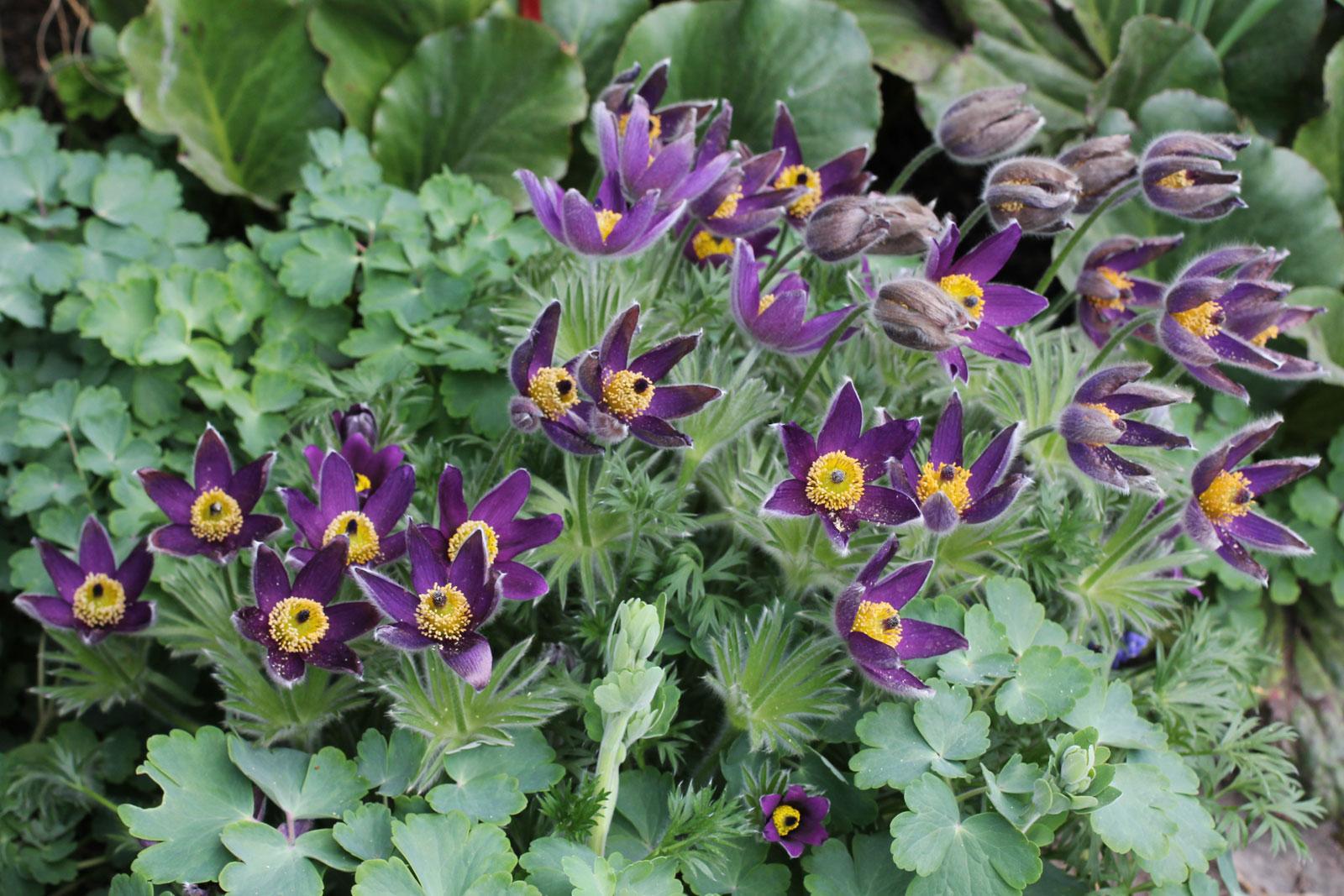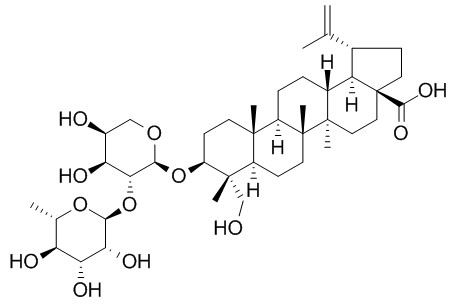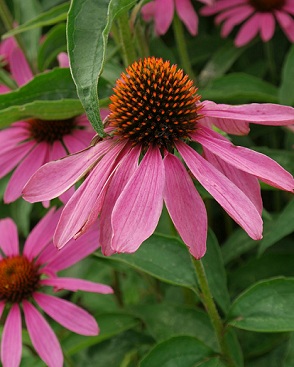- Plant-Based Protein
- Natural Plant Flavours
- Food and Dietary Supplement Ingredients
- Fruit Juice Powder
- Animal Nutrition Ingredients
- Water Soluble Ingredients
- Cosmetic Ingredients
- Unveiling the Therapeutic Potential of Rabdosia Rubescens: A Comprehensive Review
- What are the medicinal properties of Rabdosia Rubescens?
- Nutritional value of Orange Juice Powder compared to fresh orange juice.
- Processing Conditions and Nutritional Value of Orange Juice Powder
- Exploring the Versatility of Herbal Extracts in Food Flavors

What are the health benefits of hawthorn leaf?
Welcome to our blog! Today, we are diving into the world of hawthorn leaf and uncovering its incredible health benefits. Whether you're a fan of herbal remedies or simply curious about natural alternatives, hawthorn leaf is definitely worth exploring.


Medicinal herb Pulsatilla,Antibacterial,Anticoccidiosis,Anti diarrhea,Immune stimulator
Pulsatilla chinensis is a traditional Chinese medicine (TCM) that has antibacterial effect. It is used to treat diarrhea, dysentery, and other diseases. The Pulsatilla chinensis is composed of some potent antibacterial substances including protoanemonin, saponin.Pulsatilla chinensis is effective for staphlococcus aureus, Shigella dysenteriae, and Salmonella typhi.Pulsatilla can be used for poultry and livestock. Applications include immune enhancement, anti diarrhea, antiviral, anti bacteria, anti coccidia, etc.
The traditional Chinese medicine (TCM) remains the most common traditional medicine and some TCMs have been proved to have antibacterial effect since long time ago. TCM have potential to become natural antibiotic and even have synergistic effect with synthetic antibiotics. The intestinal bacteria can alter animal health and many diseases development are associated with imbalance in intestinal microorganism. The common pathologic intestinal bacteria that are normally encountered can be Staphylococcus aureus, Shigella dysenteriae, and Salmonella typhi. These bacteria can cause the disease such as diarrhea and dysentery. The Pulsatilla chinensis is one of the TCMs that have antibacterial effect on the intestinal bacteria. In TCM, it has been used to treat diarrhea, dysentery, and other diseases. The Pulsatilla chinensis is composed of some potent antibacterial chemical substances including the protoanemonin, saponin, oleanolic acid, and anemonin. These chemical substances have antibacterial properties . Pulsatilla chinensis proved to have antibacterial effect on pathogenic intestinal bacteria, it may provide a new alternative treatment for diarrhea and dysentery, but also for other intestinal infectious diseases.
What you may get from us: If you're developing a feed additive that contains medicinal herb of Pulsatilla Species (Bai tou weng).I think you can find the information or products you need here.
Simple production process in our factory: After the plant is collected, It can be made straight powder. Or the raw material will be processed by solvent extraction, separation and purification, filtration, concentration, drying and other steps to form the final products. We may also design a prouction process based on your special requirements.
Through the physical and chemical processes, those compunds you don't want was removed, and the compunds preferred was accumulated. Which make the products achieve the best effects.
|
Pulsatilla Chinensis Straight powder or Pulsatilla Chinensis Extract |
||
|
Appearance |
Powder |
|
|
Color |
Brown |
|
|
Partical size |
Normally pass through 60mesh |
|
|
Pack size |
25 kg per paper drum |
|
|
Purity of active compunds |
5%Saponins |
By UV |
|
For pricing or more information, please call 86 29 88444632 or send an email to Sales@nutraherbsource.com.
|
||
General Information
Species:
Pulsatilla ambigua, Pulsatilla chinensis, Pulsatilla dahurica, Pulsatilla koreana, Pulsatilla turezaninovii,
Common Name: Baitou Weng, Anemone Pulsatilla.
Plant information
Pulsatilla is a kind of perennial herbs, often covered with long soft hairs. Rhizome erect. Leaves basal, rosulate; petiole long; leaf blade palmately or odd pinnately divided; veins palmate. Scape with 3 bracts forming a bell-shaped involucre; involucral bracts basally connate and apically ± deeply divided into numerous lobes. Flower solitary, bisexual. Sepals 5 or 6. Petals absent. Stamens numerous, outermost whorl staminodial except in Pulsatilla kostyczewii; anthers yellow or purple, oblong, narrowly ellipsoid, filiform, or linear, with one longitudinal vein. Pistils numerous; ovule 1 per ovary. Styles long linear, pilose, strongly elongated and plumose when mature. Infructescence globose. Achenes small, spindle-shaped, pilose, with a long plumose beak formed by persistent style.

Chemical Constituents
The available literature on phytochemical reports of the genus Pulsatilla reveals that the Pulsatilla species comprise mainly triterpenoid saponins and flavonoids. Amongest various species, Pulsatilla chinensis is rich in triterpenoid saponins. More than 20 triterpenoid saponins have been isolated from Pulsatilla chinensis.
Triterpinoid aglycone anemosapogenin; triterpenoid saponins anemoside A3 , B4 ,pulchinenoside A, B , C, ranunculin, chinensiosides A, B, hederasaponin C; lupane type triterpenoid saponins pulsatilloside A, B, C, D; Bayogenin-28-O-α-Lrhamnopyranosyl-(1→4)-O-β-D- glucopyranosyl-(1→6)-O-β-D-glucopyranosyl ester; Hederagenin saponins such as hederagenin-3-O-{O-α-L- rhamnopyranosyl-(1→2)-α-L-arabinopyranoside}; oleanolic acid saponins such as oleanolic acid 3-O-{O-α-L- rhamnopyranosyl-(1→2)-α-Larabinopyranoside}; lupanoic acid saponins, such as 3β-[O-α-L-rhamnopyranosyl-(1→2)- α-Larabinopyranosyl) oxy] lup-20-(29)-en-28-oic acid 28-O- α-L-rhamnopyranosyl-(1→4)-O-β-Dglucopyranosyl-(1→6)-β- D-glucopyranosyl ester; 23-hydroxy betulinic acid, pulsatillic acid; flavonoids (38) quercetin, kaemferol; lignans (+)-pinoresinol; β-peltatin; 2β, 3β, 14α, 20, 22R, 25- hexahydroxy-cholest-7-en-6-one.

|
Pulchinenoside A3 |
|
|
Alias Name |
Anemoside A3 |
|
CAS No. |
129724-84-1 |
|
C41H66O12 |
|
|
750.96 |
|
Traditional uses
Bai Tou Weng,Pulsatilla species a traditional Chinese medicine containing Pulsatilla species such as Pulsatilla ambigua, Pulsatilla chinensis, Pulsatilla dahurica, Pulsatilla koreana, Pulsatilla turezaninovii, has been used against bacteria, amoeba and vaginal trichomoniasis . Pulsatilla cernua has been used traditionally in China as antitumor and antidiabetic . Pulsatilla cernua roots have been used as a home remedy for astringent and diuretic properties. The plant has also been used as antiphlogistic and hemostatic. Pulsatilla chinensis has been used in the treatment of amoebiasis, fever, diarrhoea, hematochezia, trauma and lung tumour. In Korea, Pulsatilla koreana roots have been used for the treatment of hematochezia due to intense evil heat, malaria, chills and fever, amoebic dysentery, epistaxis and internal hemorrhoids. Pulsatilla nigricans has been used in nervousness, sadness, mild restlessness and mental unrest. The plant has been used as a remedy for ovaritis, ovaralgia, pain associated with debility and due to acute inflammation, epididymitis, and orchitis. It increases sexual power, but lessens morbid sexual excitement. P. nigricans relieves urethral irritation, consequent spermatorrhoea and prostatorrhoea, amaurosis, cataract and opacity of the cornea. Pulsatilla nigricans has been used in uterine affections, dyspepsia, coryza, otitis, rhinitis, conjuctivitis, coughs, cutaneous affections, acute meningitis, and as taeniafuge. Pulsatilla nigricans roots have been used for blood-cooling and detoxifying effects in traditional system of Chinese medicine. Pulsatilla patens var. multifida roots have been used as an antibacterial, antiamoebic and antitumor in China.
Treatment of Diarrhea and Dysentery
① Treatment of protozoan dysentery
Adults use 15-30g of the rhizome of Pulsatilla every day, and take it three times in decoction, 7 days as a course of treatment. In severe cases, another 30-50g was used to fry into 100ml solution for retention enema, once a day. According to the observation of 23 cases, the number of stools and red and white mucus were significantly reduced after administration; the average time of turning negative of amoeba was 1.4 days by stool microscopy; rectal microscopy showed that the ulcer healed rapidly, and all cases healed 7 days on average. In addition, ten cases were treated with BAITOUWENG decoction, all of them were cured, the longest time was 9 days, the shortest time was 1 day, the average time was 2 days. In addition, it can also be used to inject the tissue extract of Pulsatilla chinensis once a day by intramuscular injection, with the initial dose of 2 ml, and then increase 0.5 ml each time until it reaches 3.5 ml; after the symptoms disappear, continue to inject 5-10 times, and then reduce to 1-2 times a week for 3 months. In severe and chronic cases, 5-8 ml of Pulsatilla tissue extract and 60 ml of normal saline were used for rectal perfusion once a day. 23 cases were treated, 19 cases were cured, 4 cases were improved, the average time of symptom disappearance was 4.4 days, and the time of defecation turning negative was 6.1 days.
② Treatment of bacillary dysentery
There seems to be less systematic observation on the treatment of bacillary dysentery with single Pulsatilla. It has been reported that 123 cases of acute bacillary dysentery or acute attack type of chronic bacillary dysentery were treated with Modified Decoction of Pulsatilla. One dose was taken every day, one dose in the morning and one dose in the afternoon, 5-10 days or 7-15 days in a course. Results: the cure rate was 78%, which was close to 76% in the control group. If the curative effect is observed according to different intestinal lesions, the curative effect of catarrh type is higher, the cure rate is 95%, the cure rate of erosion type is 75%, and the cure rate of ulcer type is 56.7%. The course of treatment of erosive ulcer type was 7-15 days, and 10% green tea decoction was added for retention enema. The mean time of fever reduction was 2.01 days for the patients with effective treatment, 6.9 days for the patients with abdominal pain, urgency and abdominal tenderness, 10.02 days for the patients with defecation, 10.1 days for the patients with defecation, 9.4 days for the patients with defecation, and 4.05 days for the patients with defecation.
Antibacterial effect
The juice extracted from the fresh stems and leaves of Pulsatilla has an inhibitory effect on Staphylococcus aureus Pseudomonas in the body (plate digging method), and it will lose its effect after the tannin is removed (but it still has the effect of breaking the flower bowl -- autumn peony); it has a poor effect on Shigella, but it has also been reported that the effect of the decoction on Shigella varies according to the bacterial swelling concentration, and on Shigella The action of bacteria was stronger, and the action of bacteria on Shushi, Freund and Songshi was weakened or not. There was no synergism or antagonism between the components of Pulsatilla Decoction (Pulsatilla, cortex Fraxini, Coptis, Phellodendron) in vitro. The alcohol extract of Pulsatilla had some inhibition on Bacillus subtilis and Staphylococcus aureus in vitro, no inhibition on the growth of Mycobacterium tuberculosis in vitro, and slight inhibition on influenza virus infection in mice. Some people have studied the effect of Anemone cernua on pathogenic and non pathogenic fungi in vitro. The results show that it has weak inhibition on a few fungi. The antibacterial active ingredient of pulsatin is pulsatin. Pulsatin has a synergistic effect on the MIC of diphtheria, Staphylococcus, Streptococcus, Escherichia coli, tuberculosis, etc. in the range of 8 × 10 (- 5) - 2 × 10 (- 6), and the antibacterial activity of pulsatin is also synergistic with streptomycin.
Anti-inflammatory and Immune-modulatory properties
Pulsatilla chinensis is commonly used for the treatment of cancers and inflammatory disorders in China. Studies showed that anemoside B4, its major ingredient, possessed notable antioxidant and protected cisplatin-induced acute kidney injury in vivo. And it also has anti-inflammation activities.
Pulsatilla chinensis extract with anemoside B4 significantly suppressed xylene-induced mice ear edema. Furthermore, it ameliorated LPS-induced kidney and lung inflammation damage, which inhibited pro-inflammatory response by NF-κB pathway in mice. In addition, anemoside B4 decreased CD4+/CD8+ ratio, inhibited splenic lymphocyte proliferation and decreased DNFB-induced changes of ear thickness.
So Pulsatilla chinensis extract with its compounds anemoside B4 presented anti-inflammatory and immune-modulatory activities in vivo, and potentially be a novel natural anti-inflammatory drug candidate for treating inflammatory disorder.
Anti amoeba activity
both in vitro and in vivo, the Pulsatilla chinensis decoction and its saponins can inhibit the growth of amoeba histolytica, but both need a large dose. In vitro test, the Pulsatilla chinensis decoction can completely inhibit the growth of amoeba at 1:40; the culture medium at 1:60 has a round shrinkage of the pre cyst type, saponin at 1:200 can completely inhibit the growth of protozoa, at 1:500 there is a round shrinkage of the pre cyst type, at 1:1000 there is a therapeutic effect of trophozoite infection in rats. Both the decoction and saponin can effectively inhibit the growth of Entamoeba. The low effective dose is 1.0g (crude drug) / kg (equivalent to 1 / 250-1 / 750 of imidine hydrochloride). When the dose is reduced to 0.3g/kg, the effect is not obvious.
Antiviral effect
The water extract of Pulsatilla can prolong the survival date of PR8 mice with influenza virus, and slightly reduce the lung damage.
Application in poultry and livestock
According to all the above-mentioned effects of Pulsatilla, it can be considered to use Pulsatilla for disease prevention and treatment of poultry and livestock. The main applications include immune enhancement, anti diarrhea, antiviral, anti bacteria, anti coccidia, etc.
Toxicity
The toxicity of Pulsatilla chinensis Decoction and its saponins is very low. It is not toxic to rats. The hemolytic index of saponins is 1:666. Compared with pure saponins, its hemolytic intensity is only 1 / 100 of that of the latter. The toxicity to goldfish was only 1 / 400 of the latter.
- Prev:Amla,Emblica officinalis-Growth promoter in livestock and poultry
- Next:Medicinal herb-Uncaria tomentosa,Antibacterial, Anticoccidiosis,Immune stimulator











